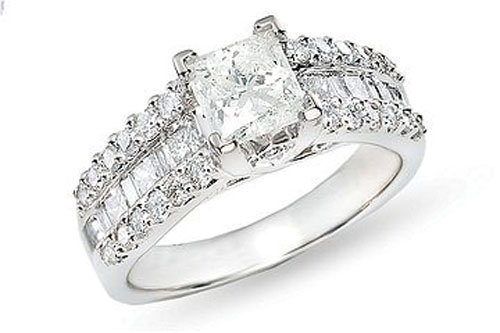.jpg)
Mazel Tov! Buying an engagement ring may be one of the most substantial purchases that you will ever make; when your sweetheart wears her engagement ring it will serve as the perfect reminder of the day you pledged your everlasting love and commitment. But there are things you need to know before you go out there and spend thousands of dollars on an item you might not know much about. First, you need to decide if you want to buy a diamond ring as a symbol of your troth.
Once you’ve decided to buy something that will make your beloved’s eyes sparkle, determine your budget. What someone chooses to spend (or not to spend!) on a ring is an entirely personal decision and there are a lot of aspects to figuring out how much you want to spend. Consider all your other expenses, in addition to thinking about what would make your loved one quickly say “Yes!”
While popular opinion says that the average someone spends on an engagement ring is two months’ salary, we recognize that this is certainly not feasible for everyone out there. To give you an idea of cost, the average size diamond purchased in the United States is 1.18 carats which can run anywhere from $900 to $30,000. The average spent is $5932. Given this information, thinking about budget is your opportunity to think realistically about what you’d like to spend.
If this is your first foray into diamonds, you may be wondering how you’ll know a good deal without becoming a gemologist. Whether you’ve done some research already, or are just getting started, you may be familiar with the Four C’s: color, clarity, carat weight, and cut. A secret that many people don’t realize is that consumers often get caught up in the size and clarity of the diamond that they forget about cut. The cut of the diamond should not be confused with a diamond’s shape. Modern cut diamonds have 58 facets in order to reflect any light that comes in through the top. When a diamond is too deep or too shallow, as light enters through the top rather than reflecting as brilliance and scintillation, any light cast upon it will filter out the sides and leave a vapid looking stone. Ever see a ring and think “wow that truly sparkles”? Unless you have a trained eye, what you’re probably seeing is the cut of the stone.
Also of great importance but seldom mentioned, is the diamond certificate. Why is a certificate so important? A diamond is priced primarily based on its color, clarity, and carat size. Since color differences are so subtle and inclusion placement can be the difference between a good or bad clarity grade, it is imperative to be certain the color and clarity grades are accurate. Grading is subjective— you should always ask to see a certificate. There are several independent grading companies that are only involved in the grading process without any involvement in sales. These include the International Gemological Institute (IGI) and the European Gemological Laboratory (EGL). Both are common at popular department stores because they are somewhat more lenient in their grading qualifications. The Gemological Institute of America (GIA) is the most respected independent grading company there is. A diamond with a GIA report will cost slightly more but for good reason. They are extremely strict when grading a diamond. GIA also mandates that all diamonds given in for grading be conflict-free diamonds.
Now for the culmination of all of our C’s, we get to cost. How will you know if you are getting a good deal? Always buy a certified diamond. Make sure that it was cut nicely and sparkles properly. Don’t be afraid to shop around and ask questions. Every diamond is unique just like the person intended to wear it. When you find the right one (as I am sure you have figured out by now) you will just know!
Feedback and/or questions can be directed to gardenstatejewelers_gmail.com. We would love to hear from you!
By Jonah Schwartz









